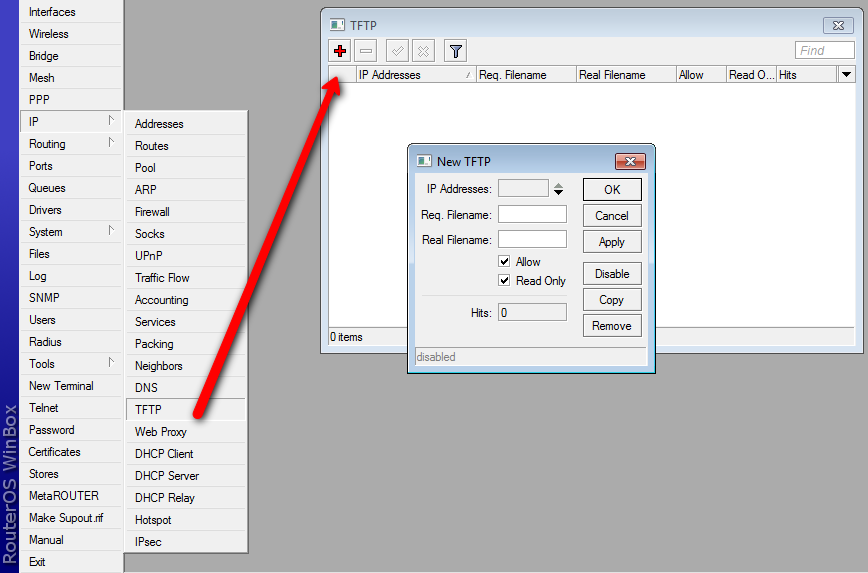Manual:IP/TFTP: Difference between revisions
Jump to navigation
Jump to search
No edit summary |
examples |
||
| Line 9: | Line 9: | ||
[[Image:2009-04-03 1314.png]] | [[Image:2009-04-03 1314.png]] | ||
== Examples == | |||
* if ''file'' is requested return file from store called ''sata1'': | |||
/ip tftp add req-filename=file.txt real-filename=/sata1/file.txt allow=yes read-only=yes | |||
* if we want to give out one precise ''file'' no matter what user is requesting: | |||
/ip tftp add req-filename=* real-filename=/sata1/file.txt allow=yes read-only=yes | |||
Revision as of 15:04, 3 April 2009
TFTP is a very simple protocol used to transfer files. It is from this that its name comes, Trivial File Transfer Protocol or TFTP. Each nonterminal packet is acknowledged separately. RouterOS has a built-in TFTP server since v3.22
- ip-address (required) - range of IP addresses accepted as clients
- req-filename - requested filename as regular expression (regex)
- real-filename - if above two values are set and valid, the requested filename will be replaced with this. If this field is empty, the req-filename will be used. If multiple regex are specified in req-filename, with this field you can set which ones should match, so this rule is validated. real-filename format for using multiple regex is filename\0\5\6
- allow (default: yes) - to allow connection if above fields are set. if no, connection will be interrupted
- read-only (default: no) - sets if file can be written to, if set to "no" write attempt will fail with error
- hits - how many times this configuration entry has been executed (viewable only)
Examples
- if file is requested return file from store called sata1:
/ip tftp add req-filename=file.txt real-filename=/sata1/file.txt allow=yes read-only=yes
- if we want to give out one precise file no matter what user is requesting:
/ip tftp add req-filename=* real-filename=/sata1/file.txt allow=yes read-only=yes
